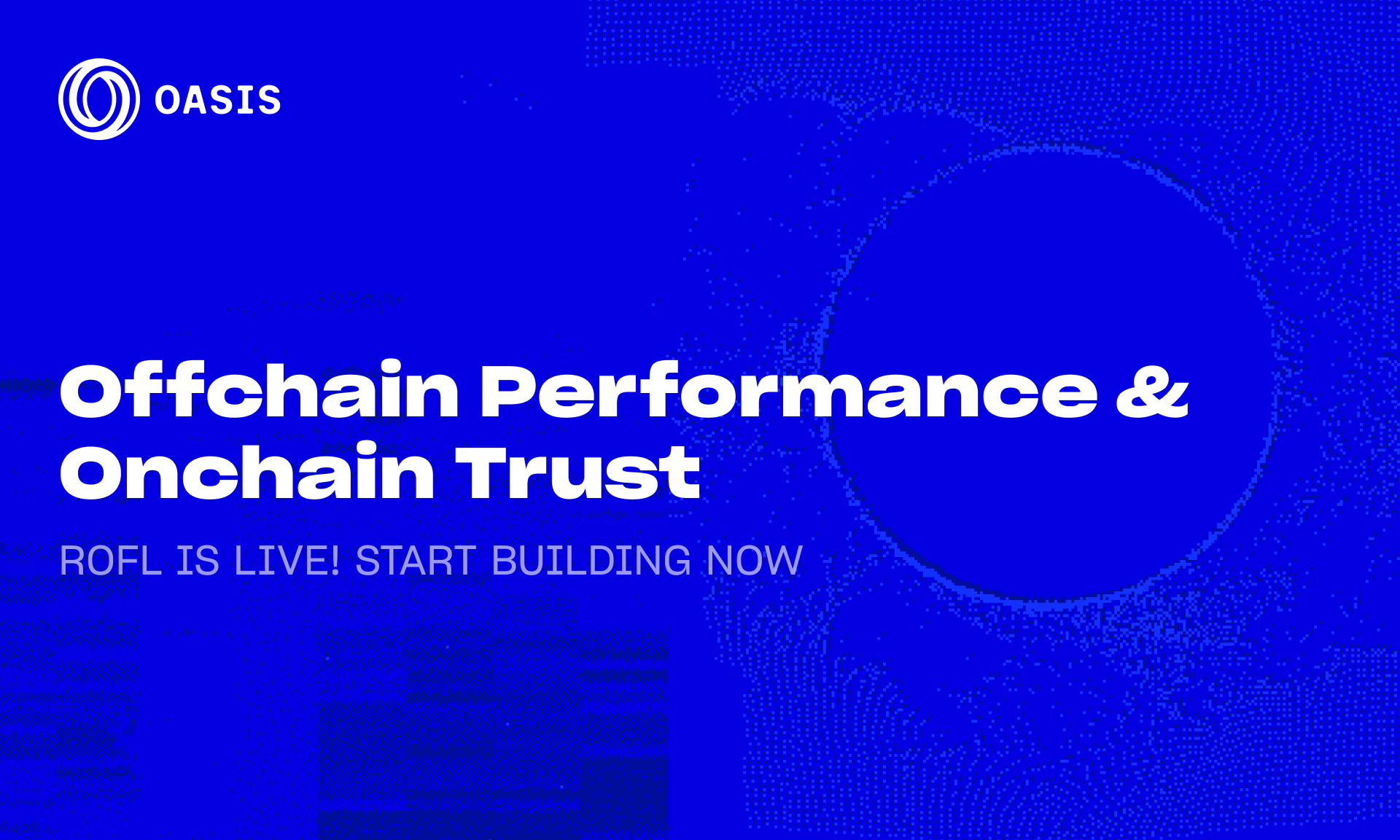The convergence of Artificial Intelligence (AI) and blockchain technology presents a transformative opportunity, yet it is fraught with challenges. While blockchain excels in security and transparency, its on-chain computation capabilities are often too slow and expensive for the complex calculations required by AI applications. Conversely, off-chain computation offers the necessary speed and scalability but lacks the inherent trust and verification mechanisms of the blockchain. Oasis Protocol’s Runtime Offchain Logic (ROFL) emerges as a solution to bridge this gap, combining the strengths of both worlds. With the recent launch of its mainnet, ROFL positions itself as a transformative framework, promising to unlock new possibilities for verifiable, privacy-preserving AI applications.
The Core Problem: On-Chain vs. Off-Chain Trade-offs
Traditional blockchain applications rely on on-chain computation, where all transactions and computations are executed and verified by every node in the network. This approach guarantees immutability and transparency, making it ideal for applications requiring high levels of trust. However, the computational overhead of on-chain processing limits scalability and increases costs. Complex AI models, which often involve millions or billions of parameters and require significant computational resources, are simply not feasible to run directly on a blockchain.
Off-chain computation, on the other hand, allows for performing complex calculations outside the blockchain, leveraging more powerful and cost-effective resources. This approach can dramatically improve scalability and reduce transaction fees. However, it introduces new challenges related to trust and verification. How can we ensure that the off-chain computation was performed correctly and that the results haven’t been tampered with? This is where ROFL steps in, offering a novel approach to address these concerns.
ROFL: The “Trustless AWS” for AI
Oasis Protocol is positioning ROFL as the “Trustless AWS” for AI applications. This analogy is apt, as it highlights ROFL’s ability to provide a scalable and reliable compute layer for AI developers while retaining blockchain-level trust, verification, and privacy.
At its core, ROFL is a framework that enables developers to augment deterministic on-chain backends with verifiable off-chain applications. These applications are designed to be stateless, with support for encrypted persistent local volumes. They have access to the network and can perform expensive and/or non-deterministic computation.
Key Features of ROFL: Enabling Verifiable and Confidential Computing
Several key features distinguish ROFL and enable its unique capabilities:
- Trusted Execution Environments (TEEs): ROFL leverages TEEs, such as Intel SGX and TDX, to create secure enclaves where computations can be performed in isolation from the rest of the system. TEEs provide a hardware-based root of trust, ensuring that the code executed within the enclave is protected from unauthorized access or modification.
- Verifiable Computation: ROFL provides mechanisms to verify the integrity of off-chain computations. This can be achieved through various techniques, such as zero-knowledge proofs or verifiable computation schemes. By providing cryptographic proof of the correctness of the computation, ROFL allows users to trust the results even though they were generated off-chain.
- Confidential Computing: ROFL supports confidential computing, which allows developers to process sensitive data without revealing it to the underlying infrastructure. This is particularly important for AI applications that deal with personal or confidential information. By using TEEs and other privacy-enhancing technologies, ROFL ensures that data remains protected throughout the computation process.
- Runtime Agnostic: ROFL is designed to be runtime agnostic, meaning that it can be used with various Oasis runtimes, such as the Sapphire runtime. This flexibility allows developers to choose the runtime that best suits their specific needs and requirements.
Use Cases: Powering the Next Generation of AI Applications
ROFL’s unique capabilities unlock a wide range of use cases across various industries:
- Decentralized Finance (DeFi): ROFL can be used to build privacy-preserving DeFi applications, such as confidential lending and borrowing platforms or decentralized exchanges with enhanced privacy features. By leveraging ROFL’s confidential computing capabilities, users can protect their financial data from unauthorized access.
- Healthcare: ROFL can enable secure and private analysis of medical data, facilitating the development of personalized medicine and improved healthcare outcomes. By using ROFL’s verifiable computation capabilities, researchers can ensure the integrity of their findings while protecting patient privacy.
- Supply Chain Management: ROFL can be used to track and trace goods throughout the supply chain in a transparent and verifiable manner. By leveraging ROFL’s verifiable computation capabilities, businesses can ensure the authenticity of products and prevent counterfeiting.
- AI-powered Crypto Trading: ROFL is being used to develop verifiable AI agents for crypto trading. These agents can analyze market data and execute trades automatically, providing users with a more efficient and profitable trading experience. The verifiable nature of ROFL ensures that the agents are operating according to predefined rules and that their performance can be independently verified.
- Web3 Applications: ROFL can be integrated into Web3 applications to enable verifiable, decentralized, and private computations. This opens up new possibilities for building decentralized applications that are both scalable and trustworthy.
Building a ROFL App: A Glimpse into the Development Process
The Oasis documentation provides resources to guide developers in building ROFL applications. The development process typically involves:
TDX Support: Enhancing Confidential Computing Capabilities
The integration of Intel’s Trusted Domain Extension (TDX) into the ROFL framework further enhances its confidential computing capabilities. TDX provides a more robust and secure environment for running confidential workloads, making ROFL even more attractive for applications that require high levels of data protection.
Conclusion: A Promising Future for Trustworthy AI
The launch of ROFL mainnet marks a significant milestone in the development of verifiable and privacy-preserving AI applications. By combining the scalability of off-chain computation with the trust and verification mechanisms of the blockchain, ROFL offers a compelling solution to the challenges facing the convergence of AI and blockchain. As the Web3 ecosystem continues to evolve, frameworks like ROFL will play an increasingly important role in enabling the next generation of decentralized and trustworthy AI applications. With its innovative approach and versatile capabilities, ROFL is poised to become a key enabler of the future of AI.





